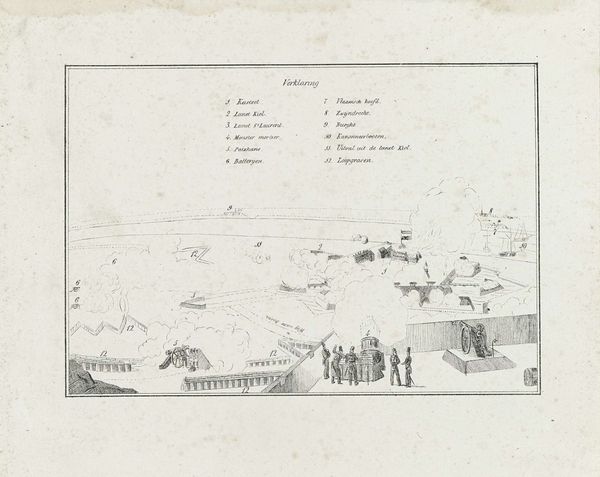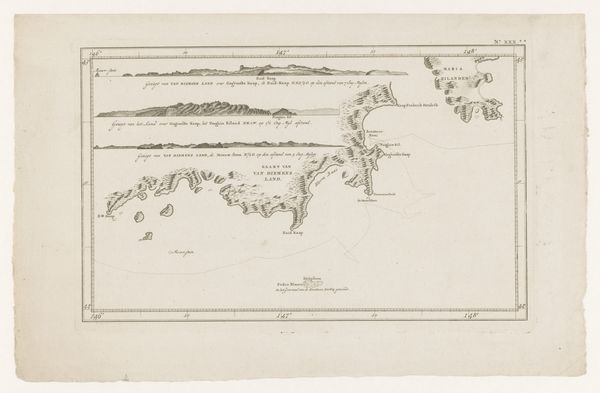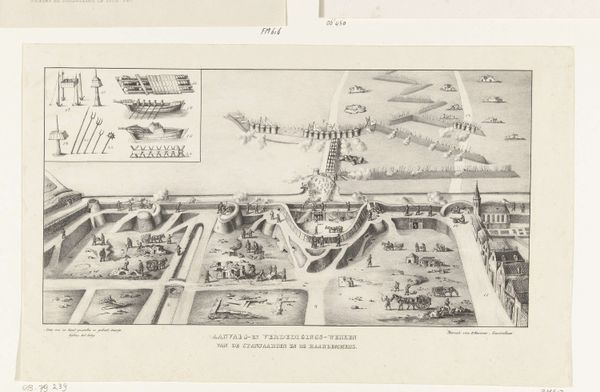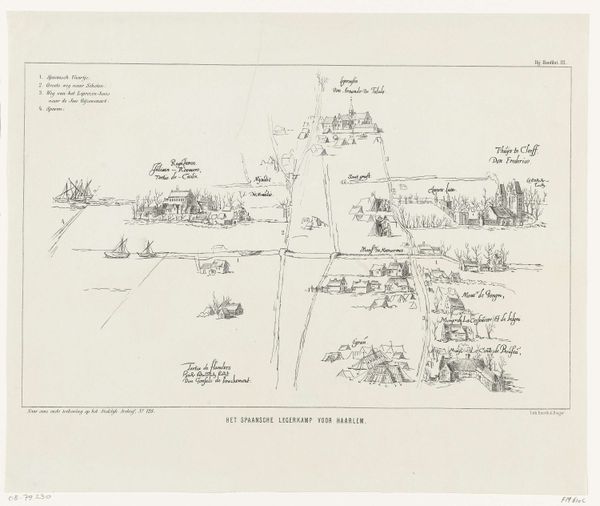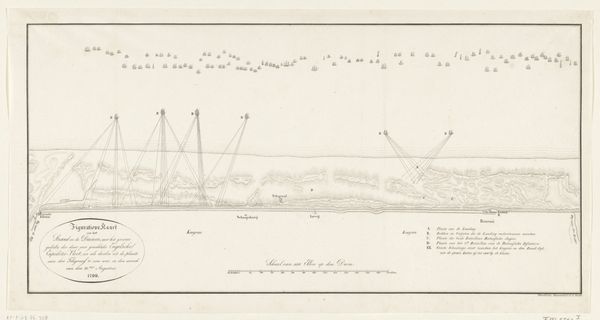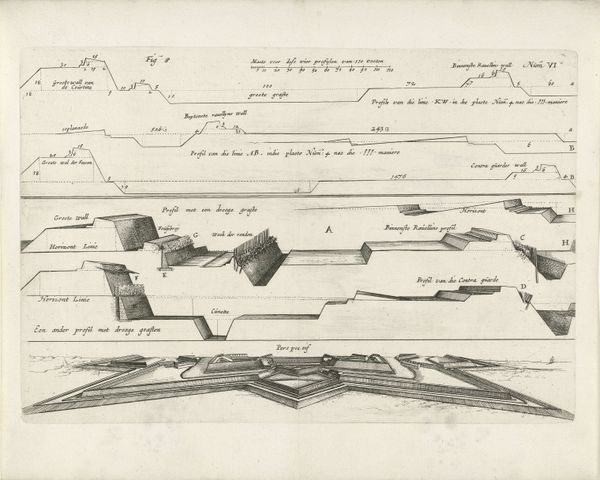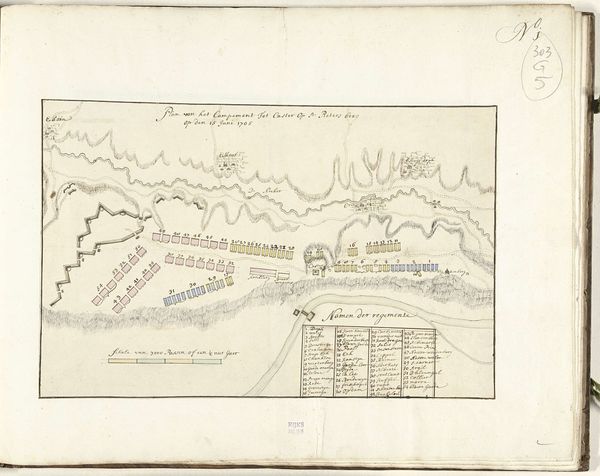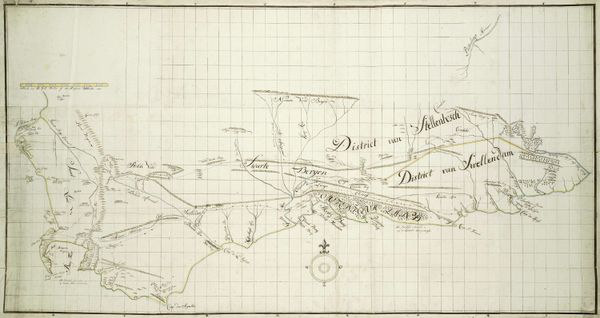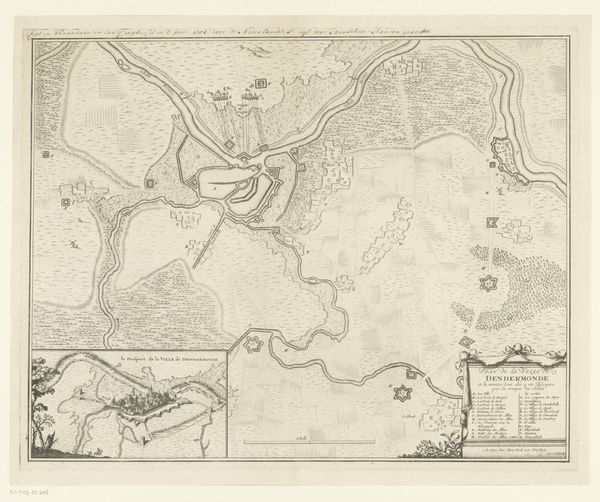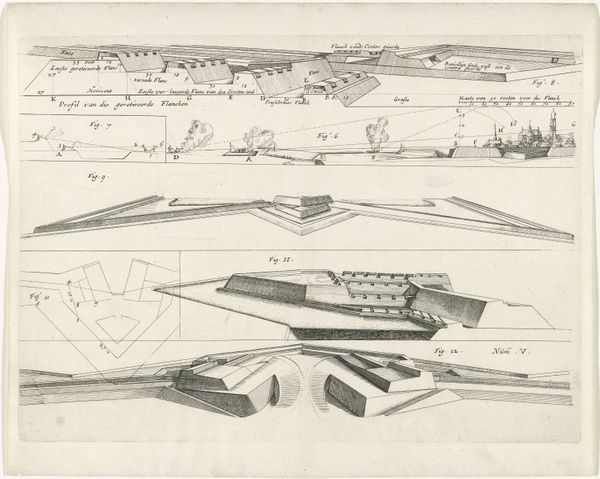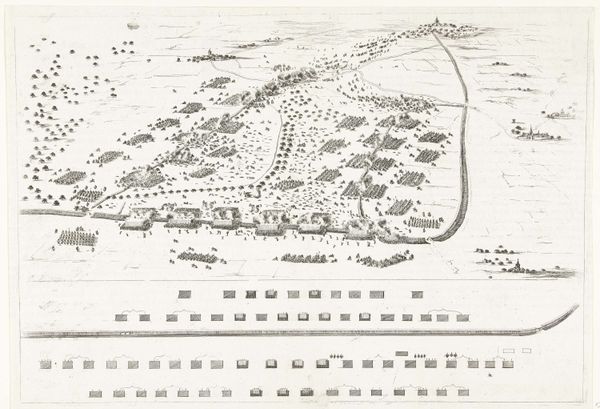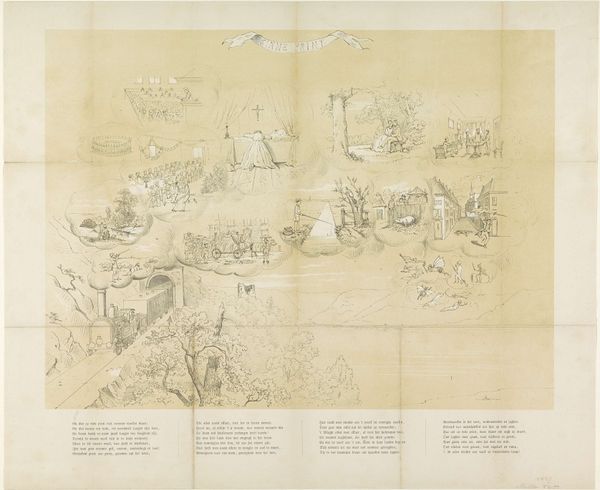
Palembangse batterijen beschieten de Nederlandse oorlogsschepen tijdens de tweede expeditie, 1821 1821
0:00
0:00
drawing, print, etching, paper, ink
#
drawing
#
dutch-golden-age
# print
#
etching
#
landscape
#
paper
#
ink
#
orientalism
#
history-painting
Dimensions: height 380 mm, width 502 mm
Copyright: Rijks Museum: Open Domain
Editor: This etching, made with ink on paper by Pieter le Comte in 1821, depicts "Palembangse batterijen beschieten de Nederlandse oorlogsschepen tijdens de tweede expeditie, 1821," a scene from a historical conflict. The linear precision and almost map-like rendering of the ships, fortresses, and landscape give it a sense of distance. What visual elements strike you most about this piece? Curator: The graphic treatment is indeed quite striking. Note how the lines create a stark contrast, almost a tension, between the solid forms of the fortifications and the fluidity of the water. Consider how Le Comte uses line weight and density. Where does he use heavier lines? How do these choices impact the overall composition? Editor: The fortifications and ships closer to the foreground have bolder lines and more detail than those farther away. Is this simply for perspective, or does it emphasize the power dynamic? Curator: Exactly. It directs the eye and establishes a clear hierarchy. We could further analyze the symbolic weight of the vertical lines used for cannon fire against the horizontal lines of the sea and ships, as well as where those lines intersect. How does that intersection of forms communicate conflict or perhaps, something more nuanced? Editor: I see a sense of organized chaos in the intersecting lines. Even though it depicts battle, it’s quite ordered due to the linearity of the scene. Curator: Precisely. Le Comte doesn’t just present an event; he uses formal elements to organize our understanding of it, leading us to appreciate how form informs narrative. Editor: That makes me see how the rigid lines might also reflect the Dutch colonial perspective, trying to impose order on a chaotic situation. Thank you. Curator: And hopefully, that insight highlights the effectiveness of formal analysis to reveal the underlying assumptions within historical representation.
Comments
No comments
Be the first to comment and join the conversation on the ultimate creative platform.
